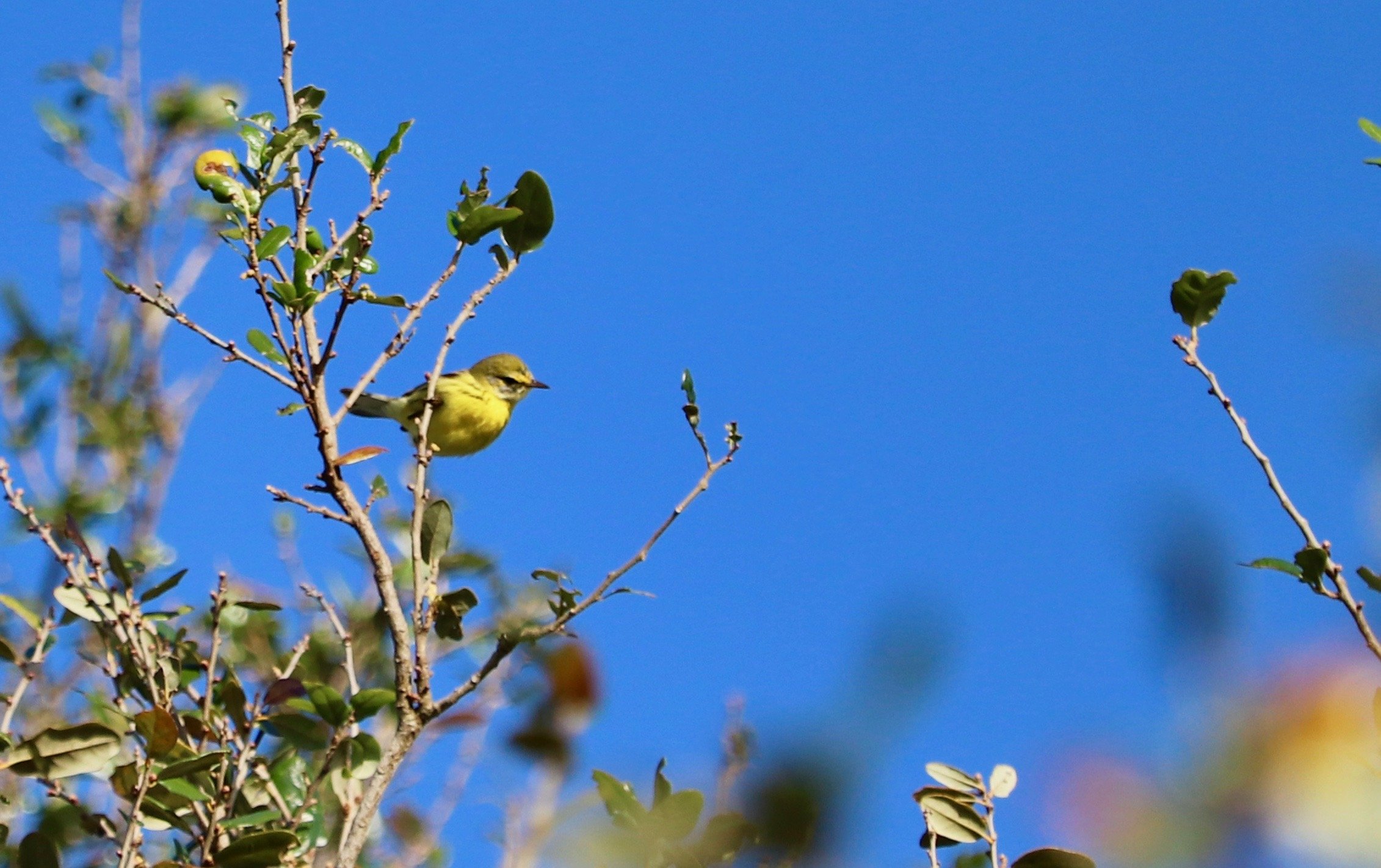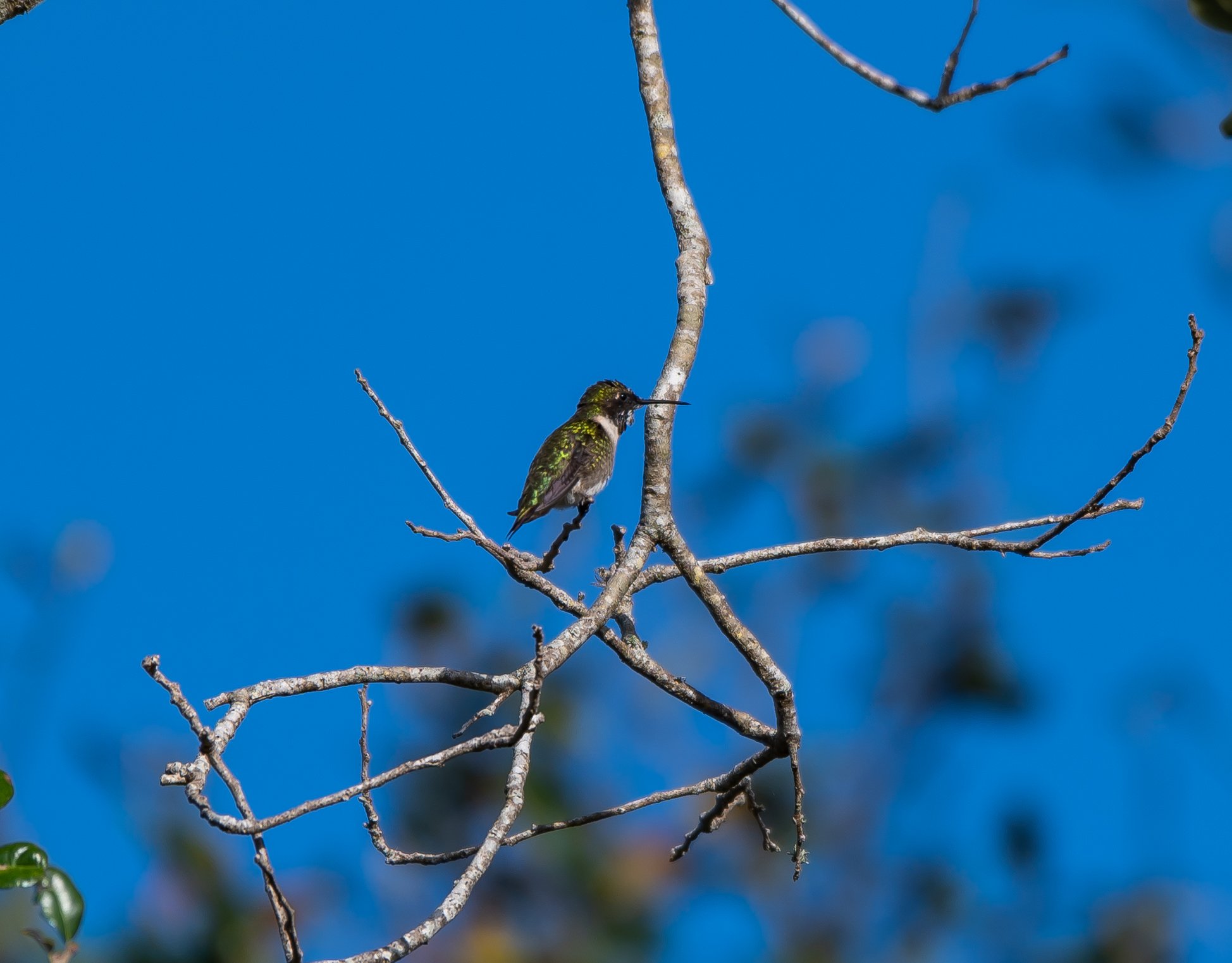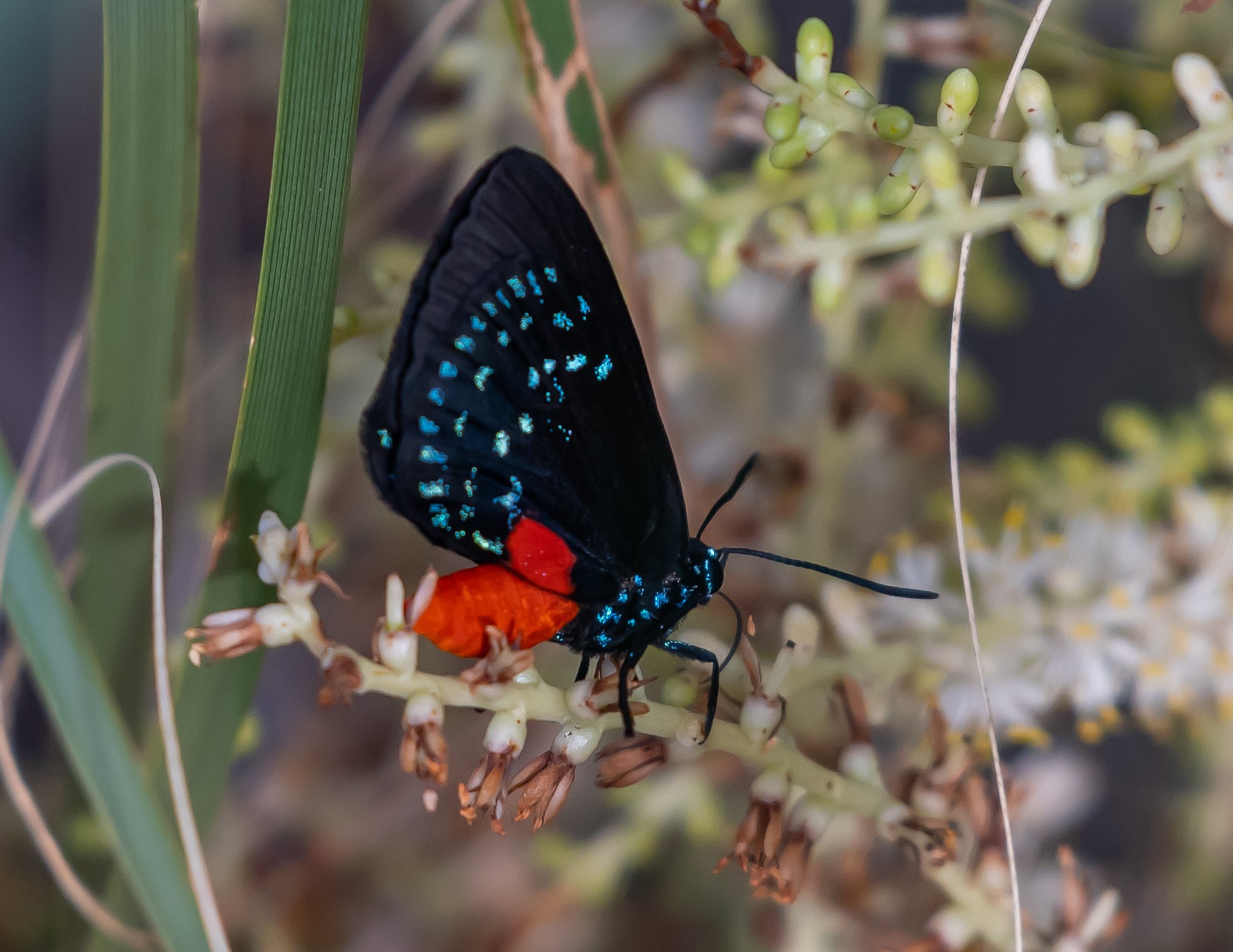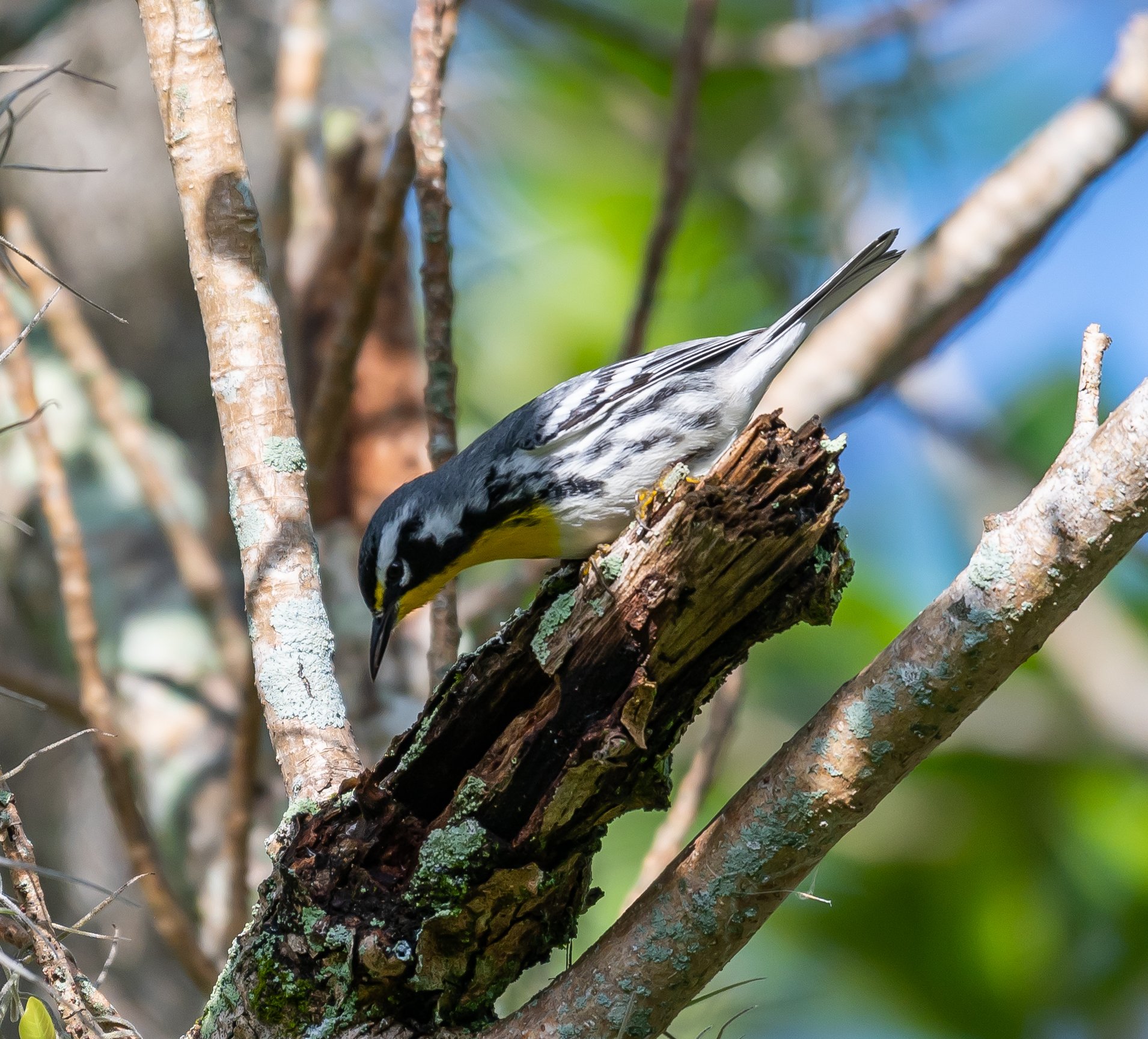Kendall Indian Hammocks Park Walk
Sunday February 12, 2023 • Kendall Indian Hammocks Park • Report by Eliana Ardila Kramer • Images Courtesy of Ana Lima and Michele Louden
Phoebes gather with field guide Eliana Ardila at Kendall Indian Hammocks Park.
After weeks of little rainfall, the skies opened up over night and provided much needed water to Kendall Indian Hammocks Park, just in time for our February 12, 2023 walk attended by 35 women. Arriving in the park just after dawn, one could hear the dawn chorus of birds starting their day. Blue-gray Gnatcatchers foraged up and down the Live Oaks for insects, Western Palm Warblers took baths in the parking lot puddles, and American Kestrels perched tall on light posts watching and waiting for a meal to scurry by.
What a contrast there was in the park from one day prior (having scouted the area the day before the actual Phoebes walk). The heavy rains brought back to life the dormant Resurrection Fern living on the Live Oak trees, changing its appearance from shriveled and brown to lush and green. We learned about “commensalism” and the relationship between these two native species. As we walked through the suburban park of nature trails, disc golf courses, baseball fields, and a skateboard park, it was so refreshing to see all the recent native plant beds that were recently planted with the flora thriving.
A nearby Coontie plant loaded with Atala butterflies eclosing (emerging as adults from the chrysalis stage) showed us how there is still hope for nature. In the last century, Atalas were almost extirpated due to overharvesting of Coontie (the Atala caterpillars’ host plant). With the revival of Coontie as an ornamental plant, the Atalas have gotten a second chance and populations have rebounded. As we cheered on the butterflies, warblers were chipping overhead and we did not know where to look with all the many species that were quickly flitting amongst the tree canopy. Yellow-rumped Warblers (or Butterbutts as we like to lovingly call them) were the primary species giving us great looks, but we also relished stunning views of Northern Parulas, a Yellow-throated Warbler, and several others.
As we continued our walk and learned more about the connection between native plants and birds, we came across some recently planted garden beds featuring plants of South Florida’s Pine Rockland. Did you know this type of habitat can only be found in South Florida and the Bahamas? We photographed and enjoyed the plants, and even hugged some Florida Slash Pines that have a new lease on life here. A Loggerhead Shrike perched and posed on a nearby fence while an Eastern Phoebe on the other side of the field characteristically flicked its tail and greeted Phoebes Birding on this sublime walk.












It was not long after that the three wintering species of vireo were spotted in fruiting Strangler Fig: Blue-headed, Yellow-throated, and White-eyed Vireo. Vireos forage in canopy trees and bushes for insects and take berries in fall and winter. Kendall actually has the densest wintering population of Yellow-throated Vireos in the entire United States, as witnessed in several Christmas Bird Counts here. Pretty impressive!
Cooper’s Hawk by Michele Louden
As we were nearing the end of our walk, we went from exploring the more open spaces to entering the forest trails that pass through a tropical hardwood hammock. We were studying a pair of Cooper’s Hawk that were nest-building high in the canopy. It was very rewarding to see that in the middle of this busy city, a pair of raptors are breeding and starting a new generation. This species is monogamous and many pairs actually will mate for life. Can’t wait to have baby Coops!
Before we knew it, three hours had passed and we tallied a whopping 45 species of birds for the morning. As we ended the walk, we reflected on the many highlights of the morning. For some it was seeing the Atalas on the Coontie plant, the Red-bellied Woodpeckers displaying the namesake red on their bellies (that is usually unseen). For others, it was the opportunity to observe Cooper’s Hawks build a nest for their future chicks and get a rare peek into the family life of this amazing raptor.
At the walk’s finale, participants posed for a photo with “Valentina” (the 1978 Volkswagen Bus) from Birding By Bus. It was an incredible group of women that came together to enjoy the plants, the birds, and a sisterhood connected by nature. Everyone helped each other to spot and identify birds, and the twelve women who were there attending their first-ever bird walk were enlightened and are certain to return for future Phoebes events!
Bird of the Day: Cooper’s Hawk / Nest Building
Plant of the Day: Coontie / Atala Butterflies
Eliana Ardila Kramer of Birding by Bus talks about the epiphytes on a towering Live Oak during a bird walk for Phoebes Birding at Kendall Indian Hammocks Park. By Ana Lima
BIRDS WE SAW
· Muscovy Duck (Domestic type)
· Rock Pigeon (Feral Pigeon)
· Eurasian Collared-Dove
· Mourning Dove
· Ruby-throated Hummingbird
· Laughing Gull
· Ring-billed Gull
· Great Egret
· Cattle Egret
· White Ibis
· Black Vulture
· Turkey Vulture
· Cooper's Hawk
· Red-shouldered Hawk
· Short-tailed Hawk
· Red-bellied Woodpecker
· American Kestrel
· Monk Parakeet
· Yellow-chevroned Parakeet
· Eastern Phoebe
· White-eyed Vireo
· Yellow-throated Vireo
· Blue-headed Vireo
· Loggerhead Shrike
· Blue Jay
· Fish Crow
· Ruby-crowned Kinglet
· Blue-gray Gnatcatcher
· European Starling
· Gray Catbird
· Northern Mockingbird
· American Robin
· Cedar Waxwing
· House Sparrow
· Boat-tailed Grackle
· Black-and-white Warbler
· Orange-crowned Warbler
· American Redstart
· Cape May Warbler
· Northern Parula
· Palm Warbler (Western)
· Yellow-rumped Warbler (Myrtle)
· Yellow-throated Warbler
· Prairie Warbler
· Northern Cardinal






